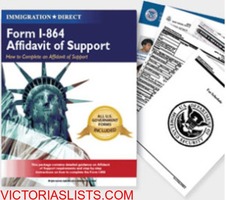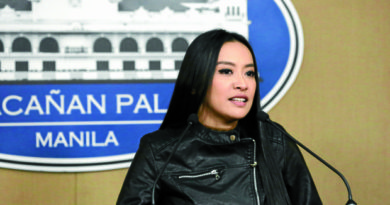OP-ED: Are offices ready to resume work?

The Ministry of Health staff have done a good job in helping to reduce hot spots but we must realise that low grade community spread is still ongoing; much of it asymptomatic.
The MCO strategy has been effective but is not sustainable in the long-run as it hurts the poor, businesses and causes collateral damage to other illnesses. The MCO can only be relaxed in stages and with all Malaysians acting responsibly, maintaining vigilance and strict discipline. We need to act as though everyone is Covid-19 positive. We need to behave as though we have an asymptomatic infection and can infect others. We need to protect all older persons as if they are our parents and all those vulnerable to Covid-19 as our sisters and brothers.
As you plan to return to the office, here is a checklist:
1. Public transport
If you are using public transport to commute, recognise that buses, trains and LRTs are higher risk for transmission, especially those with closed windows. Best to wear a mask and keep some distance from others if possible, limit touching, sanitise your hands regularly. Carpooling is an option but keep to the same group.
2. Standard operating procedures (SOP)
Every office will need an SOP and train all its staff (virtually), including the cleaners and security guards.
3. Limit entry and exit of people
We need to prevent a mass entry and exodus. One way is to stagger entry and leaving times as well as consider having multiple exits and entrances.
4. Staggered working hours
It is important to offer the option of staggered and reduced working hours. Some staff can come for the first half of the day (8am-noon) and the others come in the second half (1-5pm). Another option is for staff to take turns to work on alternate days. A work from home policy might be applicable for some staff. These initiatives will reduce crowding in the office.
5. Handling lifts
Lifts are a closed environment and, if packed, they are a high risk area for transmission. Use the stairs if possible, otherwise limit the number of passengers with masks on and facing different directions. We will need standing circles and 1-metre queue lines or circles outside.
6. Office air-conditioning
The US Centers for Disease Control (CDC) recommends increasing ventilation by opening windows or adjusting air conditioning. Consider installing high quality air filters.
7. Modify the open office
An open office environment has a higher risk for spreading the virus. Consider reducing the number of staff working at any one time and putting up partitions between work stations. Staff should be at least 1-2m apart. Consider this new design concept called the “Six Feet Office”.
8. Office meetings
Plan to meet virtually, even when you are in the same building. Limit face-to-face meetings to a small number spaced out in a room.
9. Avoiding contamination
Discourage sharing office supplies and equipment. Minimise contact with copy machines and printers.
.


10. Common staff areas
These are high risk areas and should be avoided. Staff should bring packed food and eat at their work station. Prayer times may need to be staggered and prayer items must not be shared.
.


11. Mask safety
We wear masks primarily to protect others from our saliva droplets. Ideally N-95 and 3-ply surgical mask should be reserved for healthcare professionals. When using cloth masks remember that you will require at least two. Half way through a work day, at the meal break time, remove the used mask correctly and put it into a plastic bag. Wash your hands with soap and water and have your meal. Then clean hands again and wear the second clean mask.
12. Limit staff socialising
Encourage staff not to socialise at the office. Advise all staff to confine communication to work-related needs.
.


13. Toilets
Toilets are high-risk surface contact areas. There should be clear guidelines. Foot-operated soap dispensers and door openers would be ideal. As are elbow-operated or contactless tap heads to enable easier washing. Advise staff to close the toilet seat cover before flushing, to reduce waste aerosol transmission. Door handles need to be disinfected by the person using the toilet when entering and leaving.
14. New cleaning routine
Clean and disinfect all frequently touched and common user surfaces in the office like door knobs, elevator buttons, toilet sink heads, escalator rails, handrails, light switches and countertops. Floors should be cleaned daily. For routine cleaning and disinfection of surfaces and objects, wear disposable gloves and use household bleach diluted with water (1:100 ratio, eg 10ml bleach to 1 litre water) or alcohol solutions with at least 60-70% alcohol.
15. Gloves
Disposable gloves should only be worn during cleaning activities and then discarded. Staff, security and cleaners should be discouraged from wearing gloves all the time as this gives a false sense of security.
.


16. Staff who are unwell
Staff who are unwell should be encouraged to stay at home and inform their supervisor. They should be given paid leave. Staff who have returned from overseas should be offered mandatory, paid 14-day leave of absence to quarantine themselves. Also have a plan what to do if a staff member becomes sick at work.
.


17. Site visits and conferences
For the next few months it would be wise to defer all conferences and travel, even within the country. Air travel may pose a high risk for infection. Site visits and inter-office meetings should be done virtually.
.


18. On reaching home
When you reach home avoid interacting with household members or touching surfaces. Soak your clothes in soap and water and have a shower immediately. This will reduce the risk to loved ones.
We will get through this difficult period by working together, changing our behaviour and taking personal responsibility. All organisations should plan how to adapt their office to ensure safe distancing. We need a strong, regular routine that pays attention to details and becomes second nature. This will help overcome our fear and get us back to some aspects of our work and life.
Datuk Dr Amar-Singh HSS is a senior consultant paediatrician. Comments: [email protected]



 SIGN UP TO RECEIVE OUR EMAIL
SIGN UP TO RECEIVE OUR EMAIL






